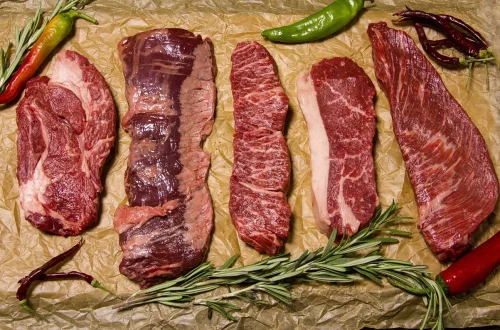
The Timeless Charm of the Medieval Belt in Fashion History
The allure of medieval fashion extends beyond mere aesthetics; it encapsulates a rich tapestry of history, culture, and societal norms. Among the many elements that contributed to the distinctive style of this era, the belt stands out as a pivotal accessory that transcended mere functionality. In medieval times, belts were not just practical items used to hold garments together but were also symbols of status, identity, and artistry. They were crafted from various materials and adorned with intricate designs, reflecting the wearer’s wealth and social standing.
The craftsmanship of these belts was often remarkable, showcasing the skills of artisans who devoted themselves to creating pieces that were not only utilitarian but also beautiful. As fashion evolved through the ages, the medieval belt maintained its relevance, continuing to inspire designers and fashion enthusiasts alike. Today, the medieval belt is experiencing a resurgence in modern fashion, illustrating the timeless appeal of this accessory that has endured through centuries.
In exploring this captivating topic, we can appreciate the profound significance of the medieval belt in fashion history, its evolution over time, and its influence on contemporary styles.
The Evolution of the Medieval Belt
The medieval belt underwent significant transformations throughout its existence, adapting to the changing needs and aesthetics of various periods. Initially, belts served a purely functional purpose. They were primarily used to secure tunics and other garments at the waist, preventing them from becoming unwieldy. As time progressed, however, the belt evolved into an essential fashion accessory that conveyed personal style and social status.
In the early medieval period, belts were often simple and utilitarian, primarily made from leather or sturdy textiles. These basic designs allowed for practicality, as they needed to withstand the rigors of everyday life. However, as medieval society became more stratified, the belt began to reflect the wearer’s social hierarchy. Nobility and wealthy individuals started to embellish their belts with ornate decorations, such as metal buckles, embroidery, and precious stones. These embellishments not only added a touch of luxury but also served as a visual indicator of the wearer’s wealth and position.
By the late medieval period, the belt had transformed into a canvas for artistic expression. Artisans began to experiment with various materials, including silk and brocade, leading to more intricate designs. The introduction of new techniques, such as gilding and enameling, allowed for even more elaborate decorations. This period saw the rise of the “sash” style, where belts were draped over the shoulder or wrapped around the waist multiple times, creating a fluid silhouette that highlighted the wearer’s figure.
As fashion continued to evolve into the Renaissance and beyond, the medieval belt’s influence persisted. Elements of medieval design can still be seen in contemporary belts, with many modern styles incorporating classic motifs and materials reminiscent of this storied past. The transformation of the medieval belt illustrates not only changes in fashion but also shifts in societal values and norms, making it a fascinating subject of study for those interested in the history of fashion.
The Symbolism Behind the Belt
Beyond their practical and aesthetic functions, medieval belts held significant symbolic meaning. They often represented social status, personal identity, and even power dynamics within society. In a time when visual cues were crucial for understanding social hierarchies, the belt became a powerful symbol of one’s place in the world.
For the nobility, a richly decorated belt signified wealth and power. The materials used—such as gold, silver, and fine fabrics—spoke volumes about the wearer’s status. Additionally, the style of the belt could indicate the wearer’s occupation or allegiance. Knights, for instance, often wore belts adorned with heraldic symbols that represented their family lineage and achievements. These belts were not only functional but also served as a form of identification, allowing others to recognize their rank and valor.
On a more personal level, the belt could also signify identity and self-expression. During medieval times, individuals often wore belts that reflected their personal taste and style, incorporating elements that resonated with their beliefs or aspirations. For example, belts adorned with motifs of nature or mythology could symbolize a connection to the earth or a belief in certain ideals. This aspect of the belt’s symbolism allowed wearers to communicate their individuality within the constraints of societal expectations.
Moreover, the belt has also been linked to concepts of protection and strength. In many cultures, wearing a belt was thought to provide a sense of security, both physically and spiritually. The act of cinching a belt around one’s waist was often seen as a way to gather strength and prepare for challenges. This symbolic significance has persisted throughout history and can be observed in modern fashion, where belts continue to be worn as a means of asserting one’s confidence and identity.
Medieval Belts in Modern Fashion
In recent years, the medieval belt has made a remarkable comeback in the world of contemporary fashion. Designers and brands are increasingly drawing inspiration from the past, incorporating elements of medieval design into modern aesthetics. This revival speaks to the enduring allure of medieval fashion and the timeless appeal of the belt as an accessory.
One of the most notable trends is the reimagining of the medieval belt through the lens of modern materials and techniques. Contemporary designers are experimenting with a variety of fabrics, from luxurious leathers to eco-friendly textiles, to create belts that pay homage to their medieval counterparts while also addressing modern sensibilities. This blend of old and new allows for unique designs that capture the essence of medieval craftsmanship while meeting the demands of today’s fashion-forward consumers.
Additionally, the versatility of the medieval belt has made it a staple in various fashion contexts. Whether worn as a statement piece over a flowing dress, cinching a tailored blazer, or even as part of a casual outfit, the belt has proven to be an adaptable accessory that can enhance any look. As fashion continues to embrace eclectic styles, the medieval belt’s ability to bridge different aesthetics is a testament to its timeless charm.
Furthermore, the rise of sustainable fashion has also contributed to the revival of medieval-inspired belts. Many artisans and designers are returning to traditional crafting techniques, valuing quality and craftsmanship over mass production. This shift towards sustainability aligns with the values of medieval artisans who took pride in creating handcrafted pieces. As consumers become more conscious of their purchasing decisions, items like the medieval belt—crafted with care and attention to detail—are increasingly sought after.
In conclusion, the medieval belt’s journey from a functional accessory to a symbol of status and artistry reflects the dynamic nature of fashion history. Its resurgence in modern style highlights the timeless charm of this accessory, allowing it to transcend its original purpose and become a beloved element of contemporary wardrobes. As we continue to explore fashion’s historical roots, the medieval belt remains a captivating subject that bridges the gap between the past and the present, proving that true style is indeed timeless.




